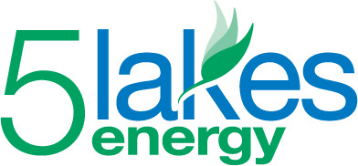Now is the time to have a serious conversation about the future of Michigan’s energy system.
In response to a projected shortfall in reserve capacity that may be as large as three gigawatts, the Michigan Public Service Commissioned has opened a “capacity” docket. Consumers Energy and DTE will be submitting information on February 17, 2015 explaining how they intend to deal with the projected shortfall. Public comment will then be accepted on the utility filings until March 9, 2015.
It looks like new central plants may once again be on the table. If so, that could be shortsighted.
New distributed energy technologies, grid control systems, and demand-side energy services have arrived and are changing the way electricity is generated, managed, marketed and distributed. These new energy technologies and energy services will better manage and balance load with supply, ultimately obviating the need for much of the expensive central plant reserve capacity used today.
Before Michigan embarks on a central plant building spree, we ought to carefully assess the energy options before us with reference to the rapid evolution of distributed energy technologies and services, and try to understand the changing energy landscape to better inform future investment. Like the battleships recommissioned in the early 1980’s at great expense only to be decommissioned a short time later, new central plants will likely have a limited operating lifetime, providing expensive – and unneeded – reserve capacity.
Building more central infrastructure that will operate less than 400 hours per year to deliver standby capacity is a crude, expensive and increasingly primitive approach to managing energy. New distributed technologies can smooth loads, firm variable resources, provide frequency regulation and voltage support, and strengthen the resiliency of the grid – and protect ratepayers from paying twice for the same capacity services.
The capabilities and performance of these technologies are improving fast.
Studies already show that energy storage becomes more economical than natural gas peaker plants when the ancillary services and fast ramping capacity of batteries are accounted for. With the advent of better and cheaper batteries through innovation, new chemistries, advanced manufacturing and scaling, the economics of distributed energy storage, if marginal today, will be compelling tomorrow.
The introduction of increasing amounts of variable generation on the grid will inevitably bring new control systems and energy services to harmonize and smooth loads. Energy efficiency is now recognized as an energy system resource that also serves as a capacity resource by reducing the amount of generation resources needed to serve loads. Energy management systems ranging from high tech residential thermostats to campus microgrids already aggregate demand response resources and are capable of contributing to capacity needs and displacing capacity services from central plants. And importantly, demand-side energy efficiency is the best means of achieving the least-cost pathway to comply with EPA’s Clean Power Plan regulations mandating emission reductions from Michigan’s power system.
Back to the Future
In 2008, no less than ten new coal-fired power plants were being proposed for Michigan. None of them were built. Projected growth in load never materialized. Instead, renewable resources were built at a fraction of anticipated cost. Energy efficiency programs were implemented at less than $11 per megawatt.
Whether we like it or not, our power system is evolving quickly – and the rate of change accelerating. New demand-side and supply-side technologies will allow grid operators to meet capacity requirements with more precision and at less cost. If we are not quite there today, it is a certainty we will be there tomorrow. Failure to take these trends into account when making long-term investment decisions is irresponsible and imprudent, will likely yield higher energy prices, and has the potential of stranding expensive infrastructure.
Michigan can learn from other states that are focusing on demand management and distributed energy resources as being the most efficient and cost-effective means of balancing supply with demand. They are reforming their energy vision and rethinking their power systems through planning collaboratives that assess emerging energy technologies and services, examine future trends, and bring the best energy expertise to the table.
Why can’t Michigan do the same?
